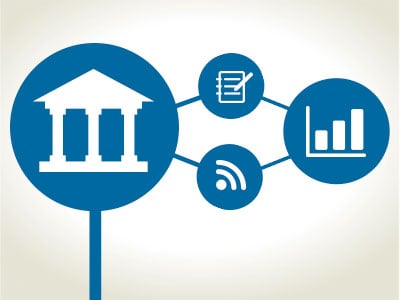

J&C Blog
Find all the latest marketing trends on the J&C Blog.

Find all the latest marketing trends on the J&C Blog.

This is the third of four blog posts on Hyper-targeting and Hyper-Personalization. In this post we will explain how these two strategies can be applied in data rich categories such as banking, credit cards and insurance. This includes strategies for each channel, as well as real world examples. If you missed previous installments you can find them here: Click here for Part 1. Click here for Part 2.
In the highly competitive and data-rich sectors of banking, credit cards, Medicare and life insurance, leveraging hyper-targeted and hyper-personalized marketing strategies is crucial for deepening customer relationships and driving growth. Here's how these industries can utilize data-driven approaches to foster genuine connections with their audience, alongside real-world examples to illustrate these strategies in action.

Leveraging Data for Personalization
Banks and financial institutions are in a unique position to gather a wealth of customer data, from transaction histories to online banking behaviors. By analyzing this data, they can offer personalized banking solutions that cater to individual needs.
Example: A Regional Bank's Personalized Loan Offers: A regional bank utilizes transaction and account data to identify customers who may be in the market for a home renovation loan. By analyzing spending patterns and savings, the bank sends personalized loan offers with pre-approved amounts, similar to how e-commerce platforms suggest products based on browsing history.
platforms suggest products based on browsing history.
Gaining Audience Insights
Credit card companies have access to detailed purchase data, which can be instrumental in understanding customer preferences and lifestyle choices. This information allows for precise segmentation and targeted offers.
Example: Credit Card Rewards Optimization: A credit card company segments its customers based on their spending in categories like travel, dining, and groceries. It then customizes its communication to offer bonus points or cash back in the categories each customer uses most, thereby increasing card usage and customer satisfaction.
"Banks and financial institutions are in a unique position to gather a wealth of customer data, from transaction histories to online banking behaviors"
Crafting Hyper-Targeted Messages
Medicare insurance providers can use demographic data and healthcare trends to create messages that resonate with their target audience. This involves understanding the needs and concerns of individuals approaching eligibility age or those seeking supplemental coverage.
Example: Medicare Advantage Plan Education Campaign: A Medicare insurance provider uses age and geographic location data to identify potential enrollees. It then sends out educational direct mail and emails that address common questions and concerns about Medicare Advantage plans, using language and examples that resonate with the senior demographic.
Real-World Examples
Banking - Personal Financial Management Tools: A mid-size bank introduces a personal financial management tool within its online banking app. Using data analytics the bank provides customers with personalized budgeting advice, savings goals, and investment recommendations based on their transaction history and financial goals, similar to how fintech apps tailor financial advice.
 Credit Card - Tailored Travel Benefits: A credit card company analyzes spending data to identify frequent travelers. It then offers them a new card with superior travel benefits, including airport lounge access and higher points earnings on travel-related purchases, making the card more attractive based on the customer's spending habits.
Credit Card - Tailored Travel Benefits: A credit card company analyzes spending data to identify frequent travelers. It then offers them a new card with superior travel benefits, including airport lounge access and higher points earnings on travel-related purchases, making the card more attractive based on the customer's spending habits.
Medicare Insurance - Custom Enrollment Guides: A Medicare insurance provider creates personalized enrollment guides for potential customers, highlighting plan features and benefits most relevant to their health status and interests. By using data on prior healthcare utilization, the provider can suggest plans that offer the best value for the customer's specific needs.
Life Insurance - Dynamic Policy Adjustment Notifications: A life insurance company uses life event triggers, like the birth of a child or a new mortgage, gathered from customer data to suggest relevant policy adjustments. Customers receive personalized communications explaining how these life events impact their insurance needs, offering a seamless way to update their coverage.
Conclusion
In banking, credit cards, Medicare insurance, and life insurance, the power of hyper-targeting and hyper-personalization lies in their ability to transform vast amounts of data into meaningful, customer-centric communications. These examples showcase how leveraging detailed insights into customer behaviors and preferences can lead to highly effective marketing strategies that not only drive revenue growth but also significantly enhance customer satisfaction and loyalty. By adopting these data-driven approaches, companies in these sectors can develop deeper, more genuine connections with their customers, ensuring long-term success in today’s competitive landscape.

Need Help with Hyper-Targeting, Hyper-Personalization or Both?
Using Hyper-targeting and Hyper-personalization can be complicated. But the rewards are great. J&C has the experience to help. For more than 40 years, J&C has been creating data-driven Hyper-targeted and Hyper-personalized multichannel marketing campaigns. These programs are proven to generate engagement, response and meet the most demanding business outcomes. Contact J&C today, to find out how J&C can help you improve your program’s results.
Topics: Direct Marketing, Personalization, Data Marketing, Hyper-targeting, Hyper-personalization
303 E Wacker Drive, Suite 2030
Chicago, IL 60601
Phone: 312-894-3000
Fax: 312-894-3005